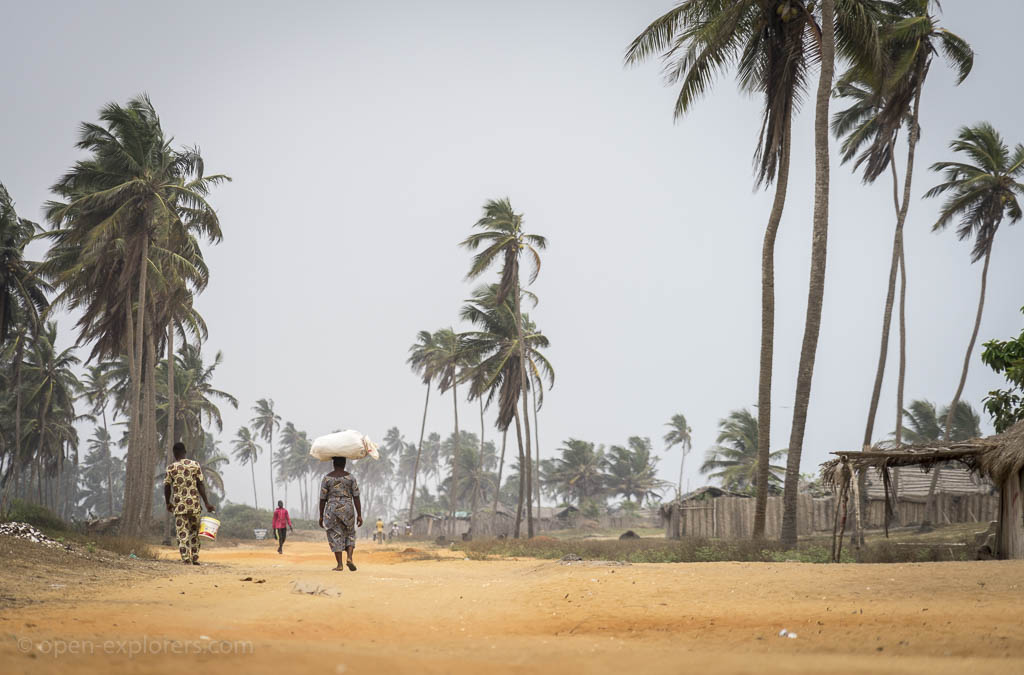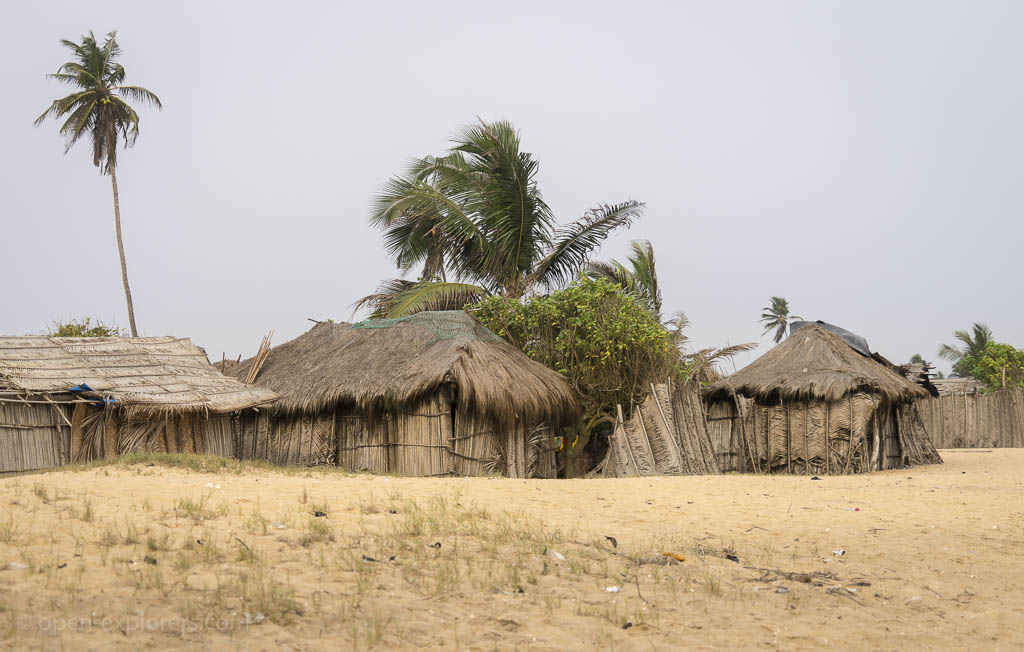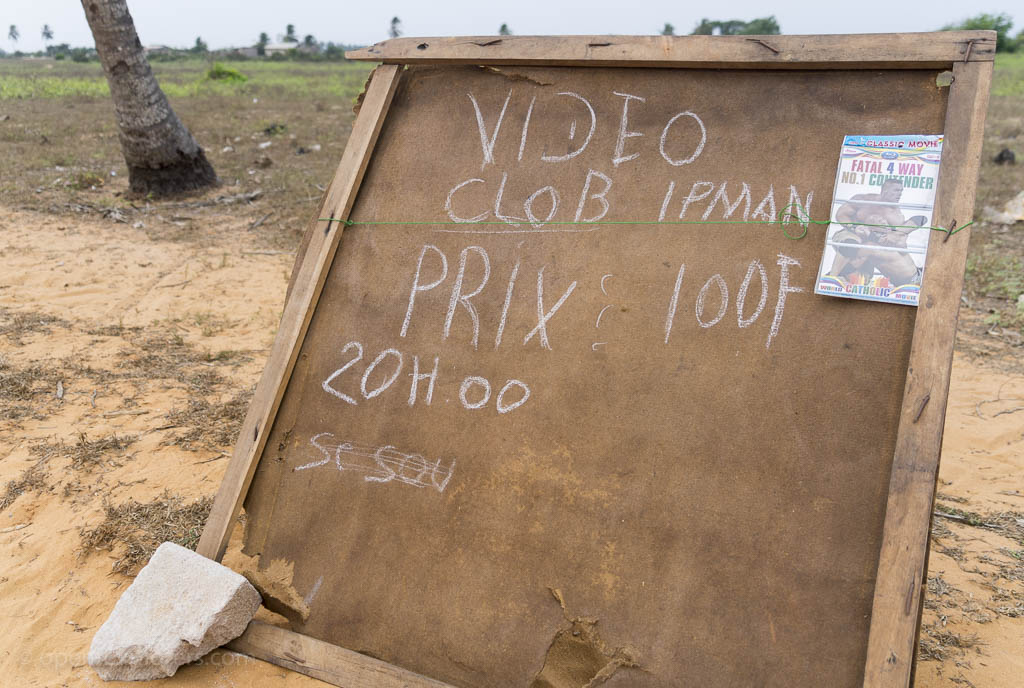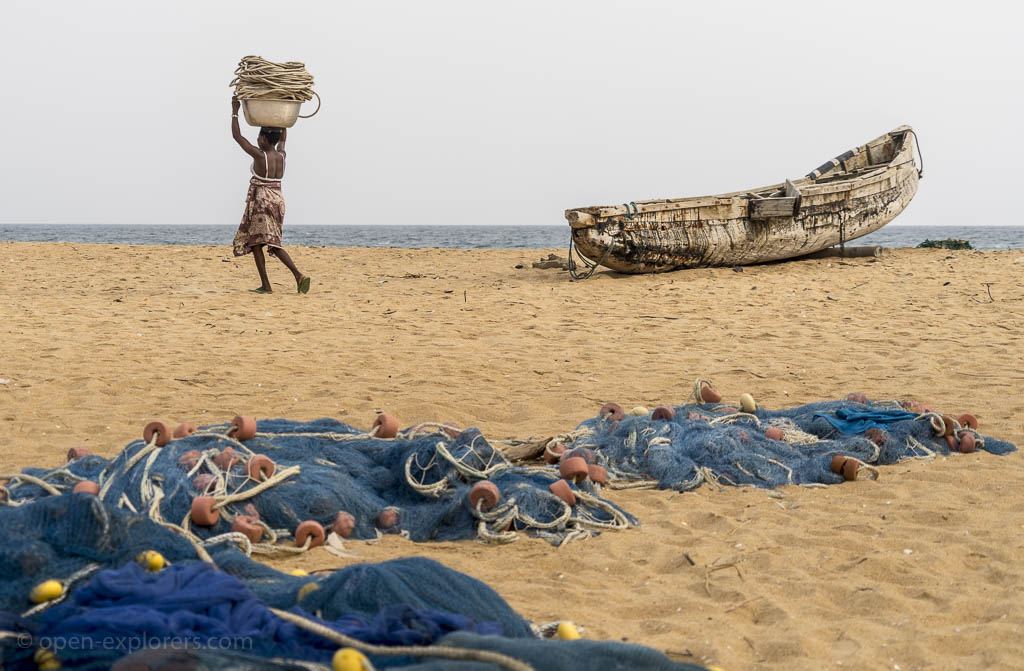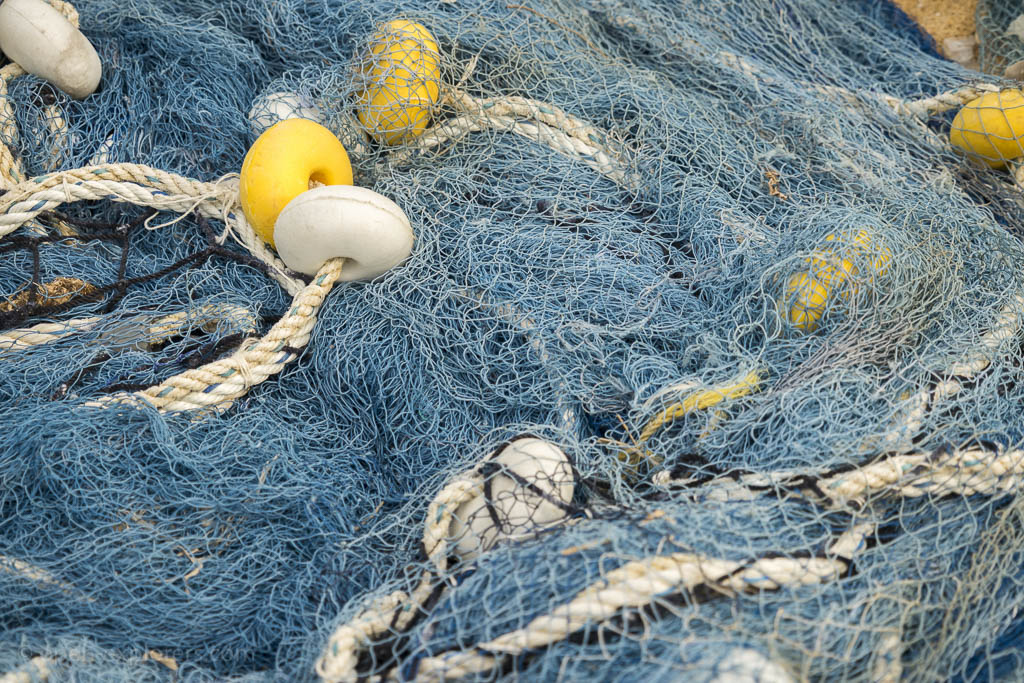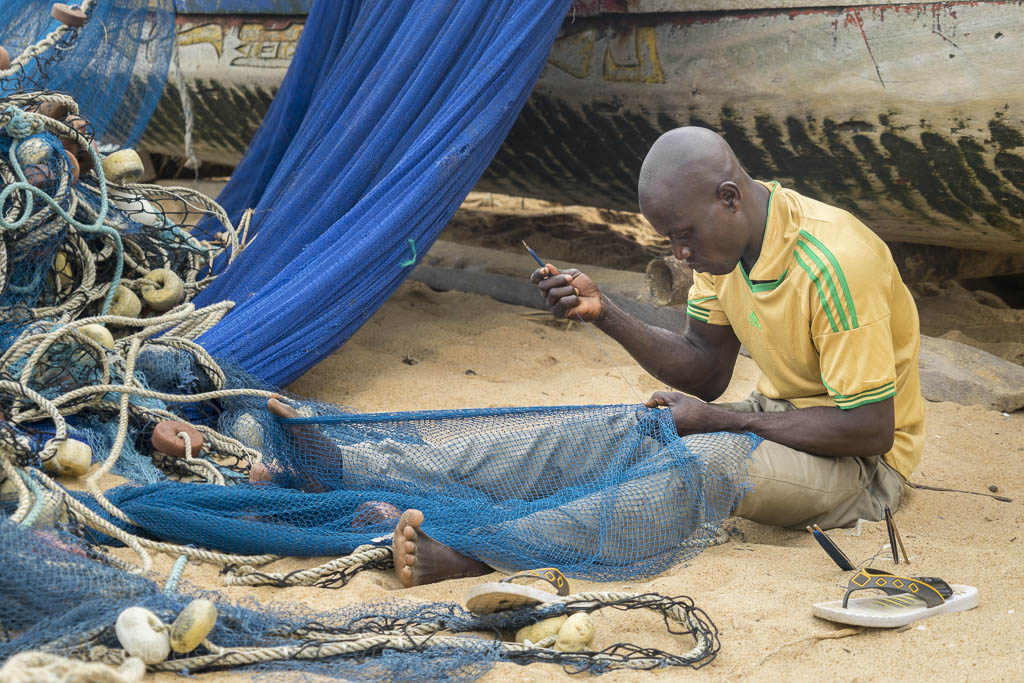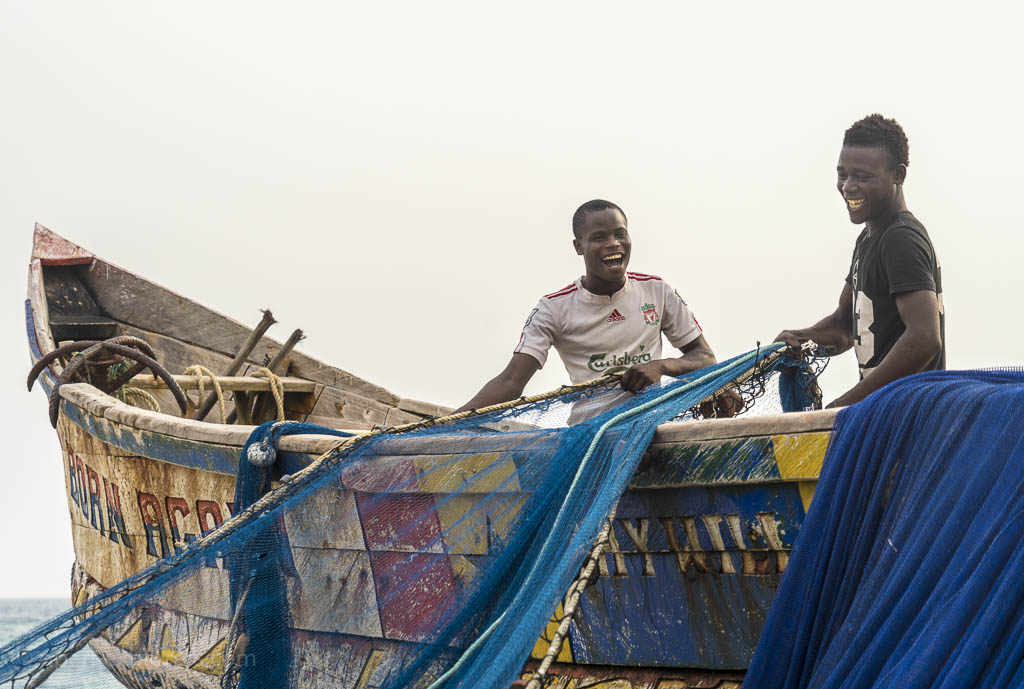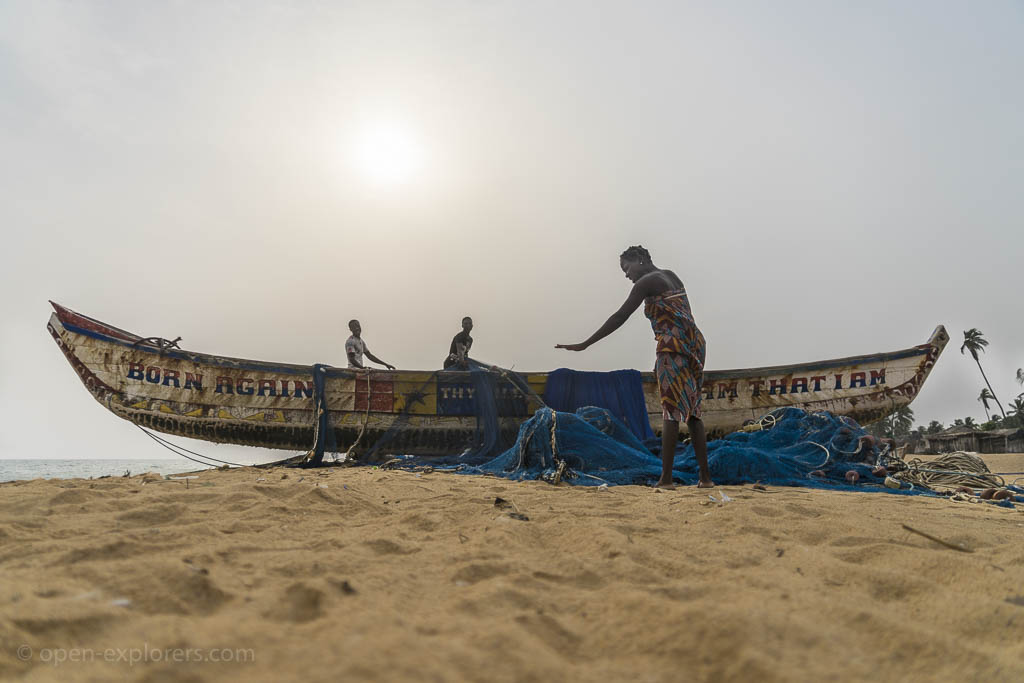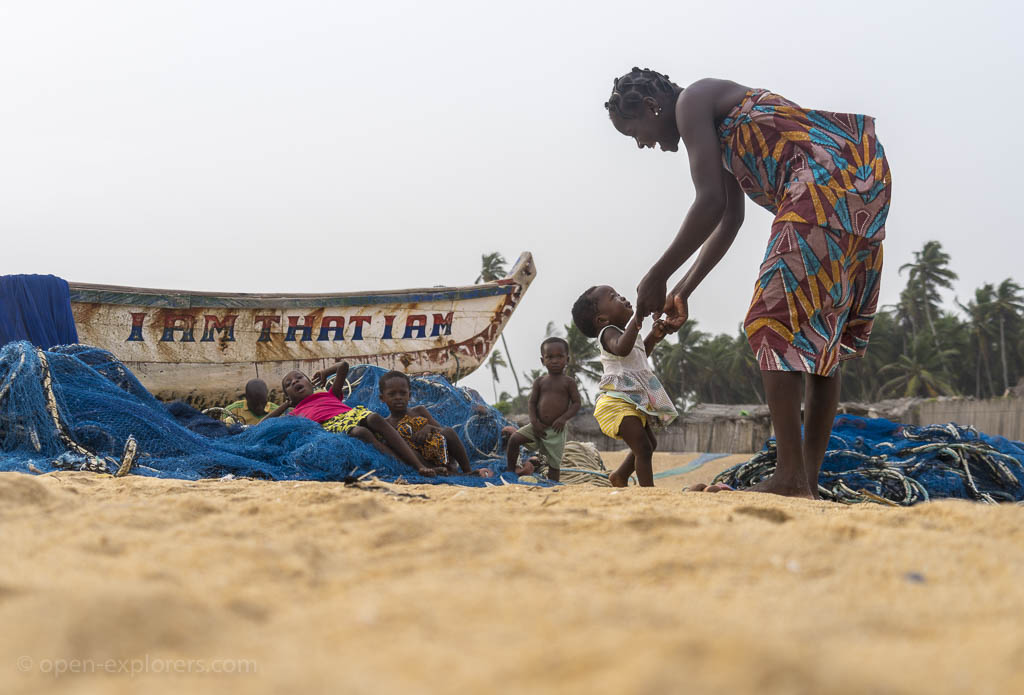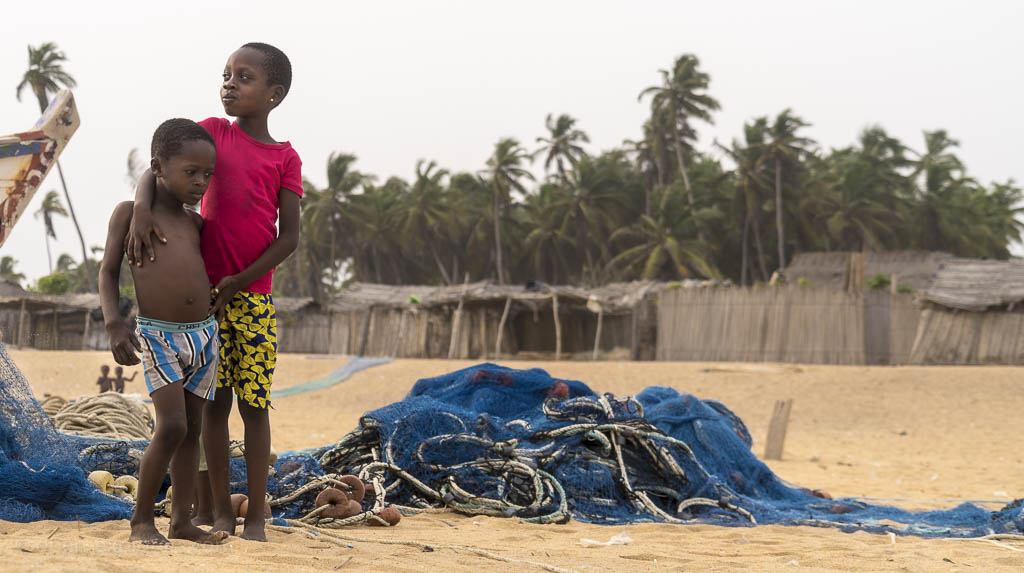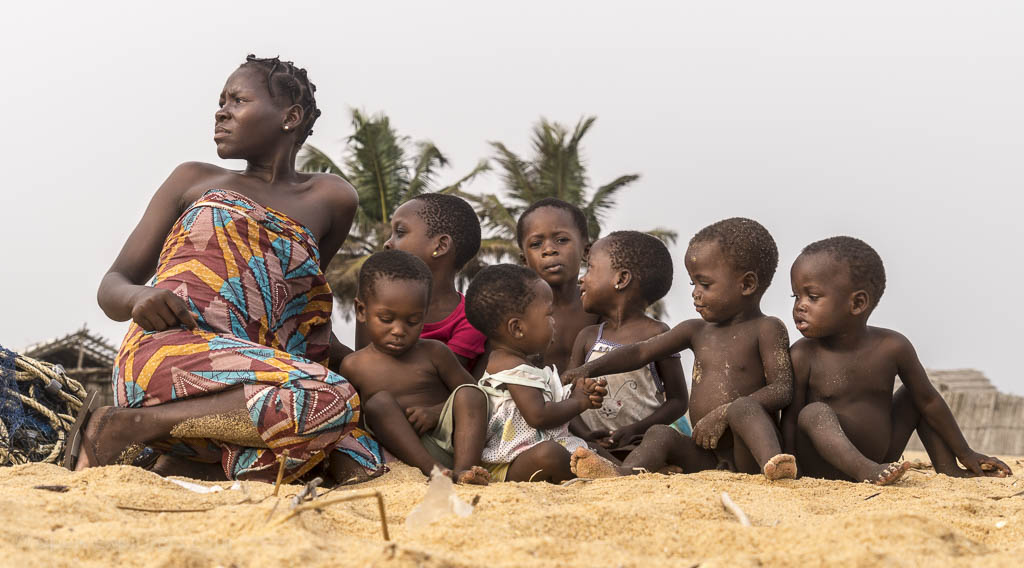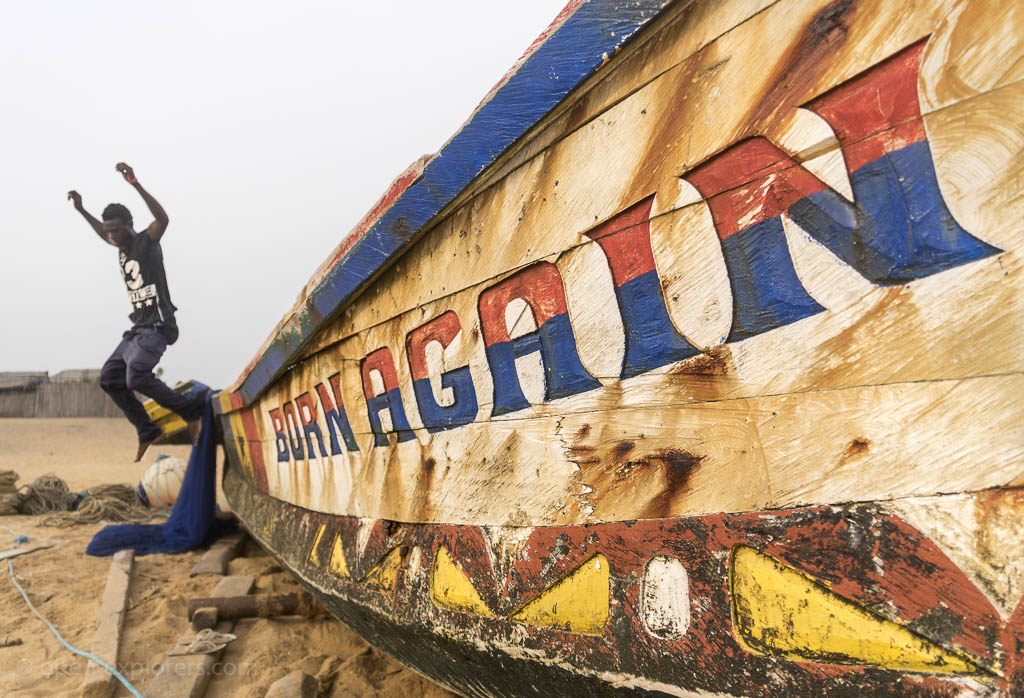Day 1031-1032 - The slave coast
After hearing stories about how people tried to avoid being caught by the slave hunters in Ganvié and Abomey, the whole slave trade topic becomes even more tangible in Ouidah. Not even 300m from our hotel stands the „Port du non Retour“, the door of no return. The memorial has been put up in 1992 in remebrance of millions of people who were forcilby taken from their native lands until the abolition of the slave trade in 1807.
The villagers from the hinterland that didn’t manage to hide in good time in order do escape the slave hunters were brought to Ouidah and sold to the Europeans. They were kept incarcerated in one of the european forts (there was a french, a portugese and a british one) for weeks until the next ship would arrive in port. By the hundreds they were then loaded onto the ships and send off to the Americas – with no return.
Once upon a time Ouidah was it’s own proper kingdom (Kingdom of Whydah) until it was overthrown and annexed by the Dahomey kingdom in 1727. At that moment in time it was already the second most important slave port along the so-called slave coast (Togo, Benin, western Nigeria). Economically the Dahomey kings gained significantly from the slave trade with the Europeans and it was also a means to obtain firearms and ammunition that allowed them to consolidate their position as an important regional power.
Tag 1031-1032 - Die Sklavenküste
Nachdem wir in Ganvié und Abomey Geschichten gehört haben wie die Menschen sich in den Gegenden vor den Sklavenfängern zu retten versuchten, wird das Thema Sklavenhandel hier in Ouidah immer greifbarer. Keine 300m von unserem Hotel entfernt steht die „Port du non Retour“, die Pforte ohne Wiederkehr. Ein Mahnmal, daß 1992 errichtet wurde, in Gedenken an die Millionen von Menschen die bis zur Abschaffung der Sklaverei 1807, versklavet ihre Heimat verließen.
Die Dorfbevölkerung aus dem Hinterland die es nicht rechtzeitig geschafft hatten sich zu verstecken und eingefangen wurden, wurden hier nach Ouidah gebracht und verkauft. Sie mussten in einem der europäischen Forts (je ein portugiesisches, französiches und britisches) teilweise wochenlang in Kerkern eingesperrt ausharren bis das nächste Schiff im Hafen eintraff. Zu Hunderten wurden sie an diesem Strand auf die Schiffe verladen und brachen auf gen Amerika – ohne Wiederkehr.
Ouidah war mal ein eigenens Königreich (Kingdom of Whydah) bis es 1727 vom Dahomey Königreich besiegt und annektiert wurde. Zu diesem Zietpunkt war die Stadt schon der zweit-wichtigste Hafen entlang der sogenannten Sklavenküste (Togo, Benin, Westnigeria). Ökonomisch profitierten die Dahomey Könige sehr stark vom Sklavenhandel mit den Europäern und erhielten auf diesem Weg auch Waffen und Munition, die ihre Position als wichtige regionale Macht enorm stärkten.
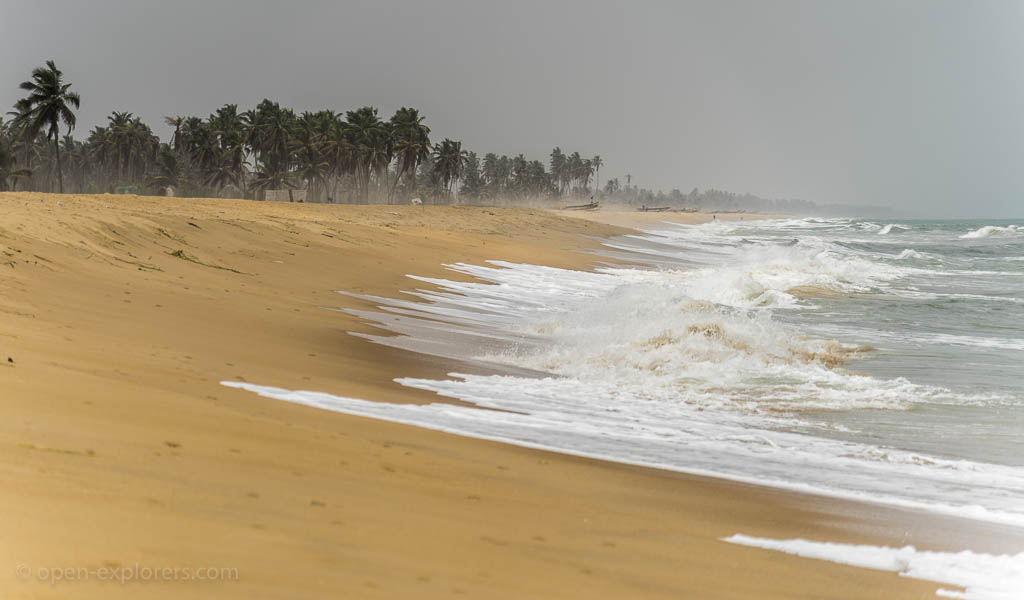
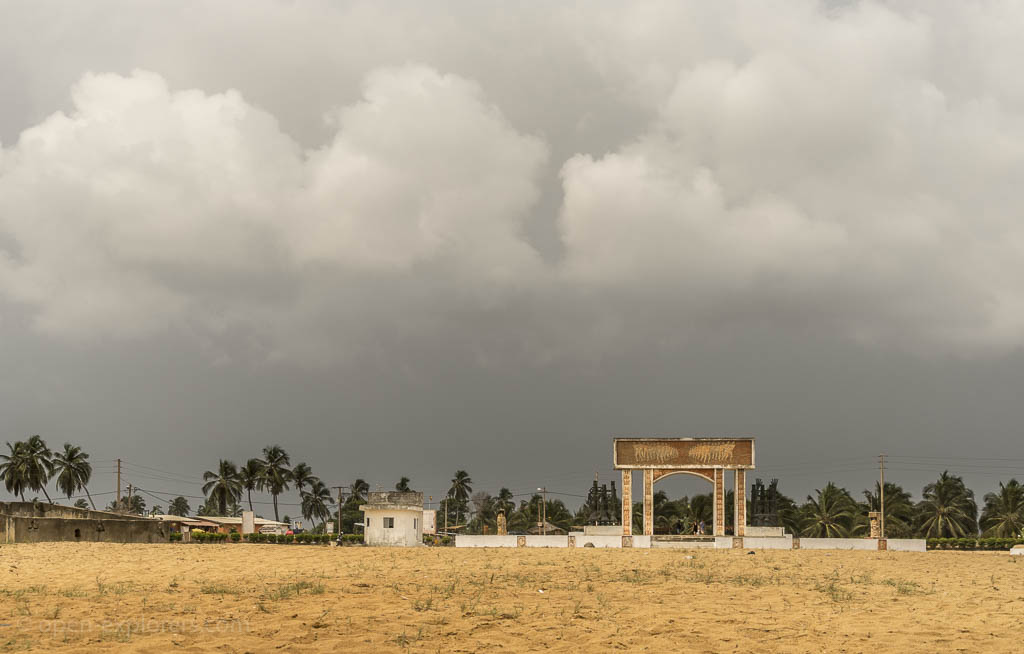
"Porte du non Retour"
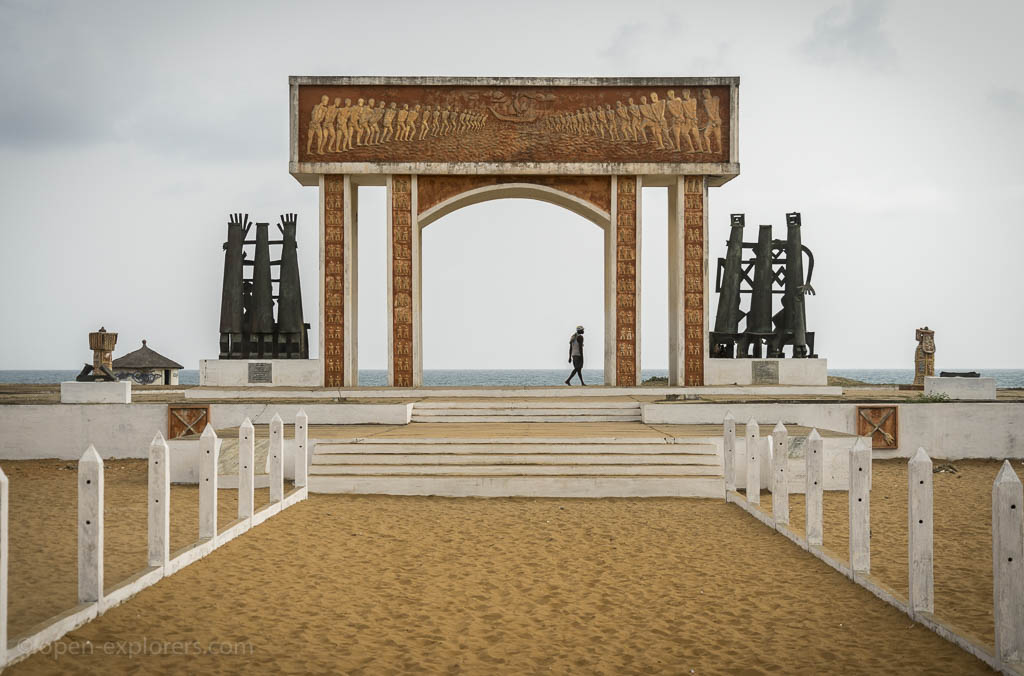
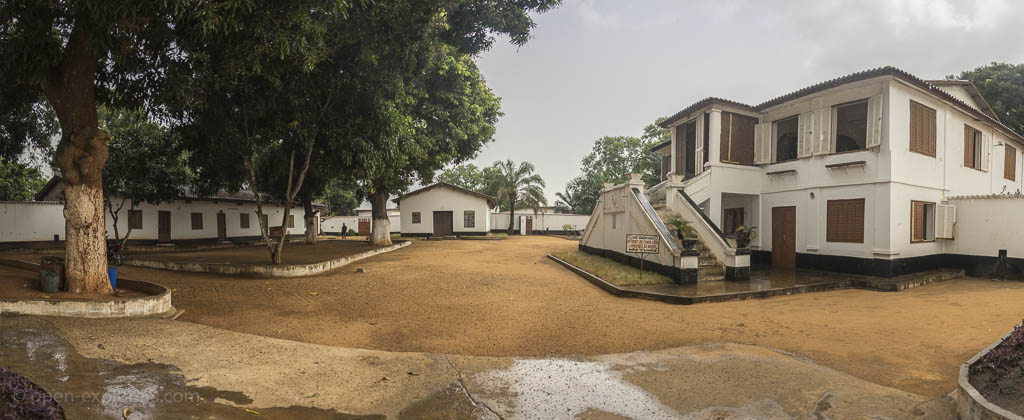
The Portugese fort is the only one remaining of formerly 3 European forts. It now houses a very interesting museum. Unfortunately it's not allowed to take photos inside.
Das portugiesische ist das einzige von den ehemal 3 europäischen Forts das noch existiert. Heute befindet sich darin ein sehr interessantes Museum. Leider darf man drinnen keine Fotos machen.
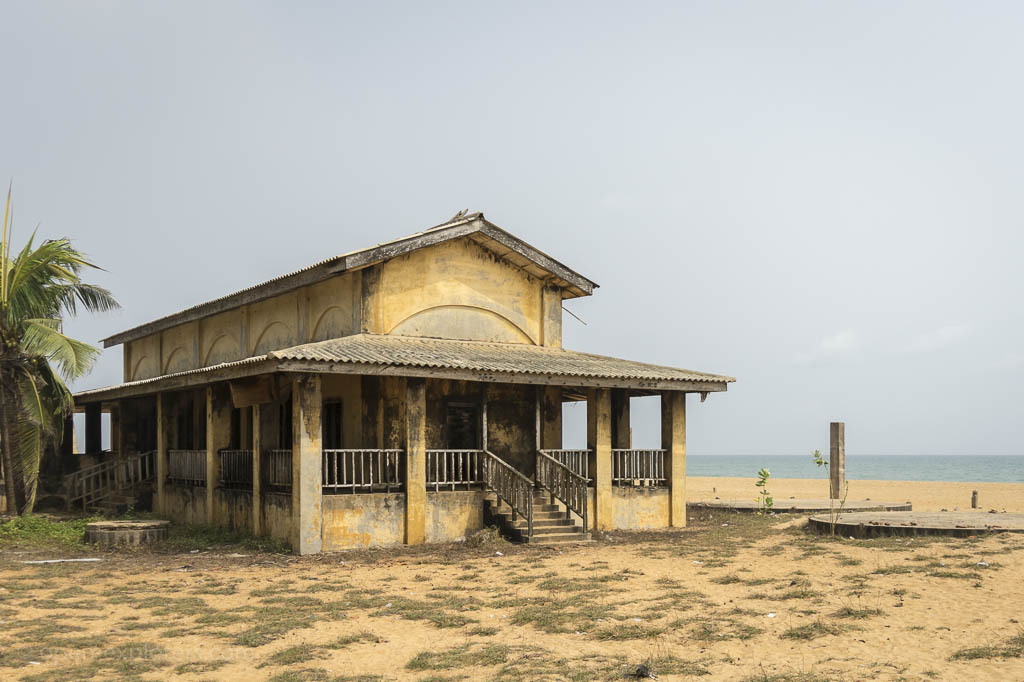
The portugese fort is located in the town of Ouidah whereas another outpost is located directly on the beach. Both are connected by the so-called slave route.
Das portugiesische Fort befindet sich im Stadtkern Ouidahs, der Aussenposten hingegen direkt am Strand. Beide sind durch die sogenannte Sklavenroute miteinander verbunden.
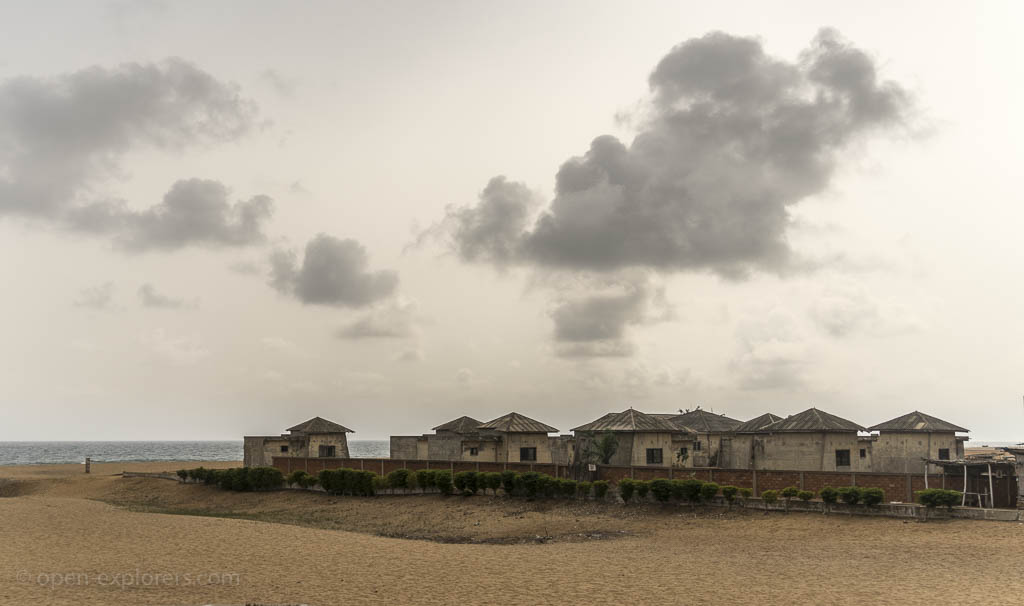
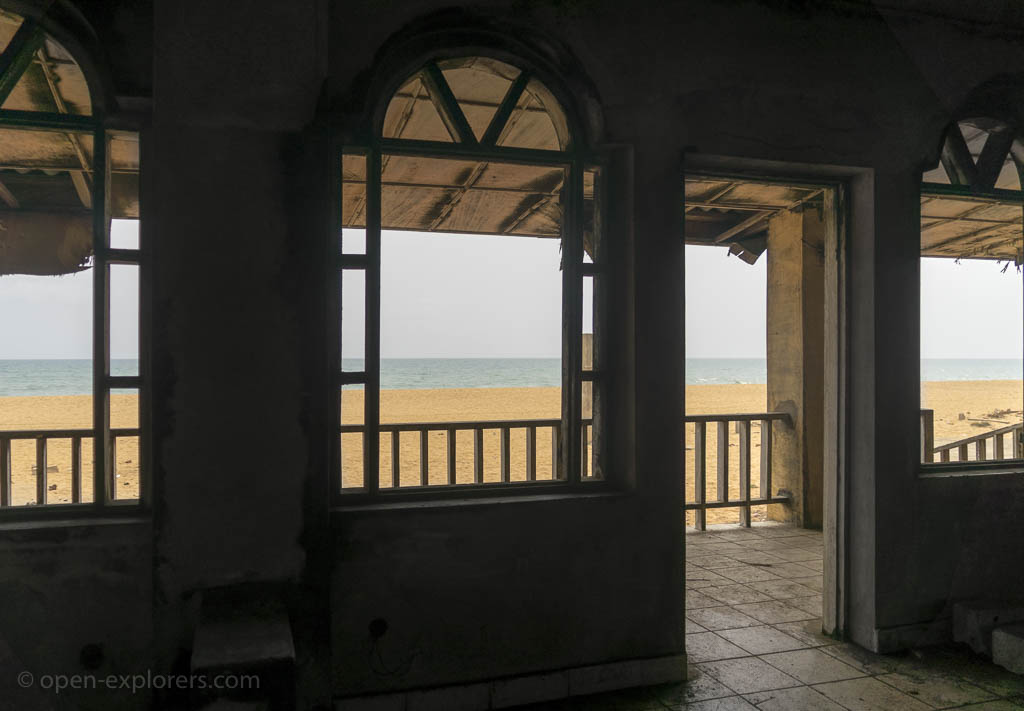
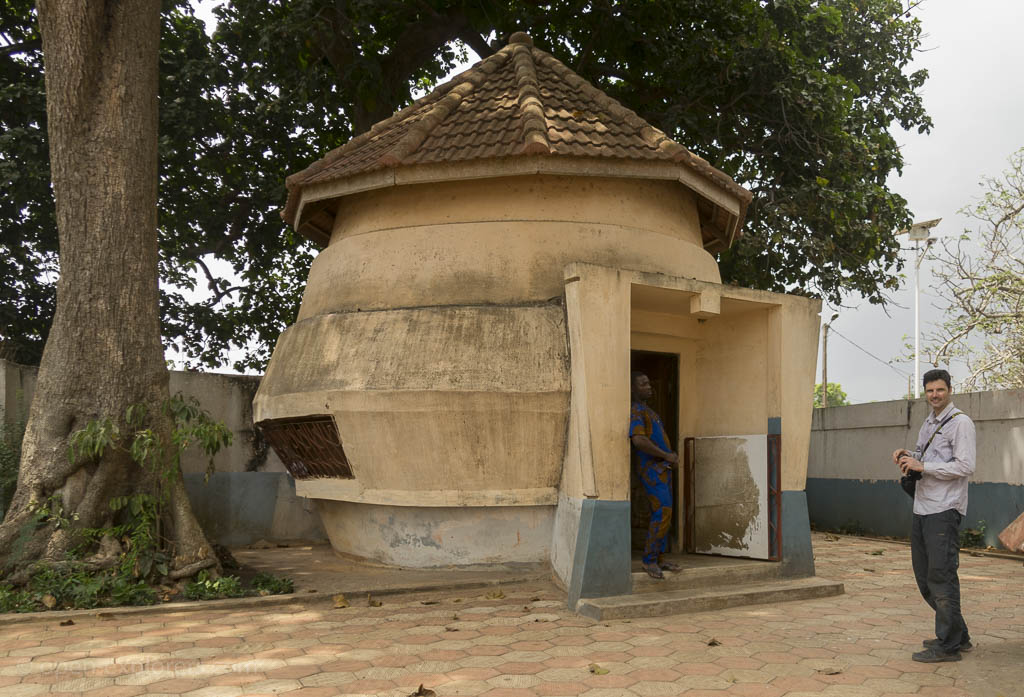
The "temple of pythons" is a major sight of Ouidah and some sort of voodoo temple where ceremonies are conducted. Nobody there spoke English so it was a bit difficult to make sense of everything. But from what I gathered this is the site where the settlement was founded. A woman came to the forest that used to cover this area. She saw a python and was very frightened at first but she was able to talk to the animal and found out that it was willing to help her. She build a hut for all the pythons in the forest and was protected from evil warriors since that time because only she knew that the snakes were friendly and not dangerous. Hence pythons are the sacred animal of Ouidah.
Der "Tempel der Pythons" ist eine der Hauptattraktionen Ouidahs und eine Art Voodoo Tempel wo Zeremonien durchgeführt werden. Da niemand dort Englisch sprach war es etwas schwierig zu verstehen worum es eigentlich ging. Aber soviel wie ich mitbekommen habe, ist das der Ort wo die Siedlung Ouidah einst ihren Ursprung fand. Eine Frau ging in den Wald der hier damals alles bedeckte und sah eine Python. Im ersten Moment hatte sie Angst, aber da sie mit Tieren sprechen konnte, fand sie heraus, dass die Schlange ihr freundlich gesinnt war. Sie baute für alle Pythons im Wald eine Hütte und war seitdem und für alle Zeit geschützt vor feindlichen Kriegern. Denn niemand außer ihr wusste, dass die Schlangen friedlich und nicht gefährlich waren. Daher werden Pythons in Ouidah als heilig verehrt.
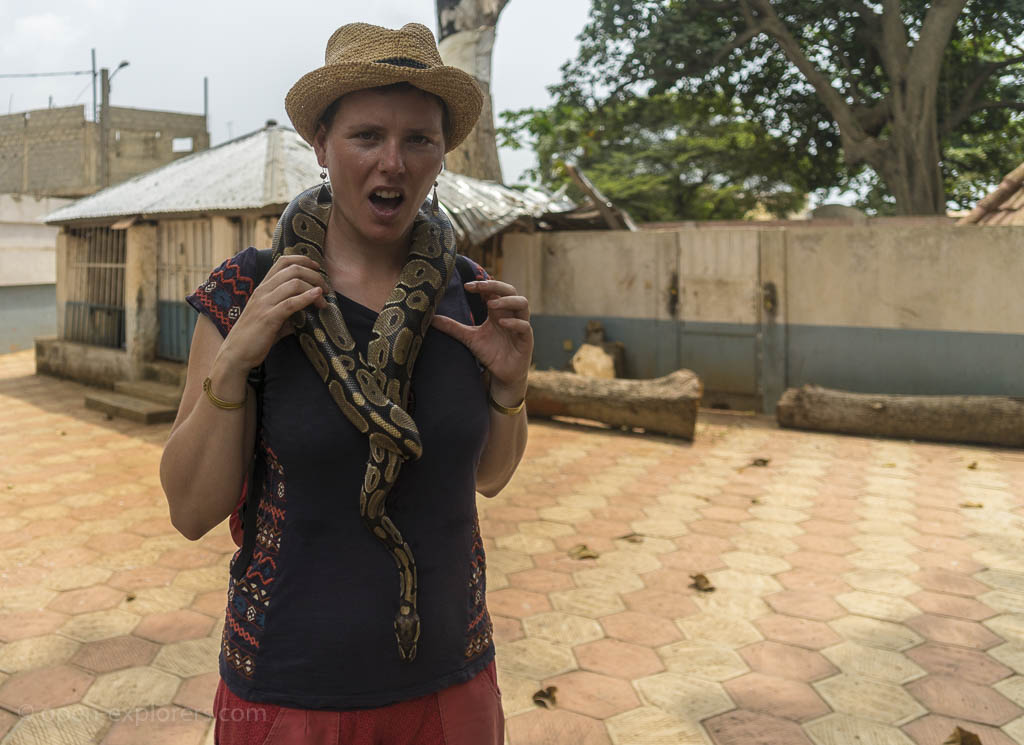
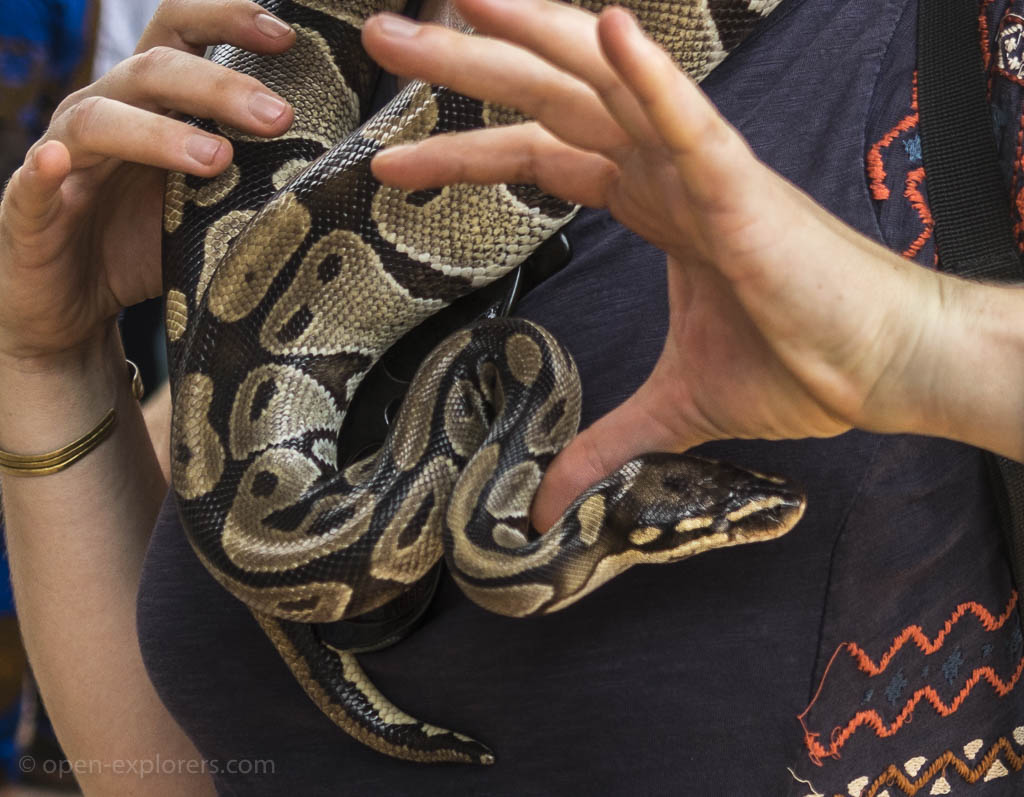
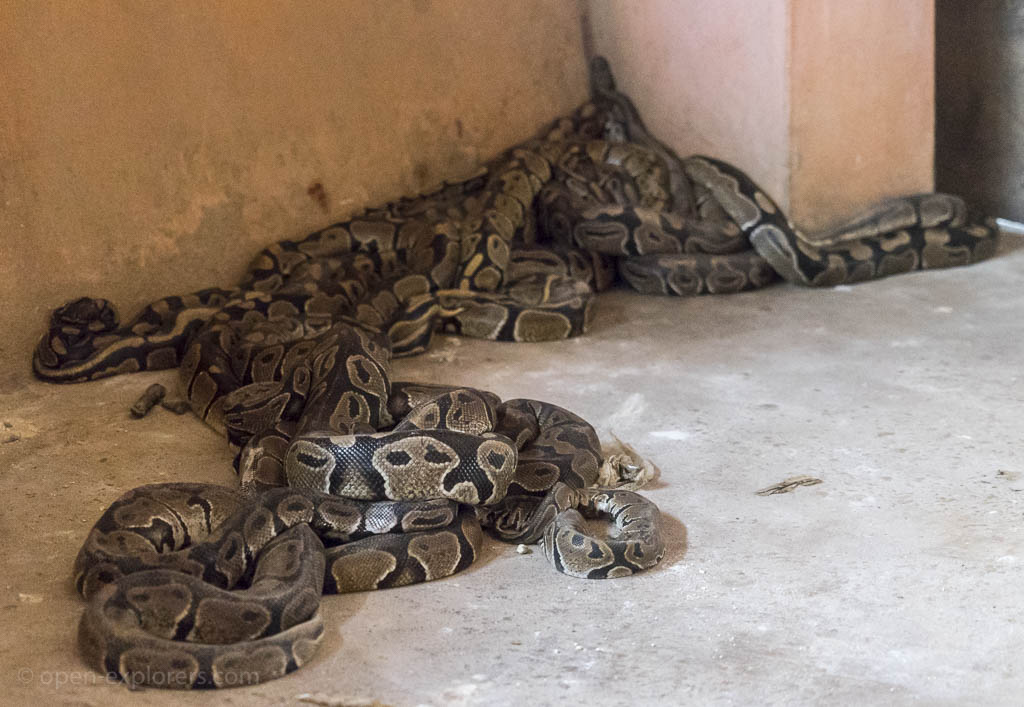
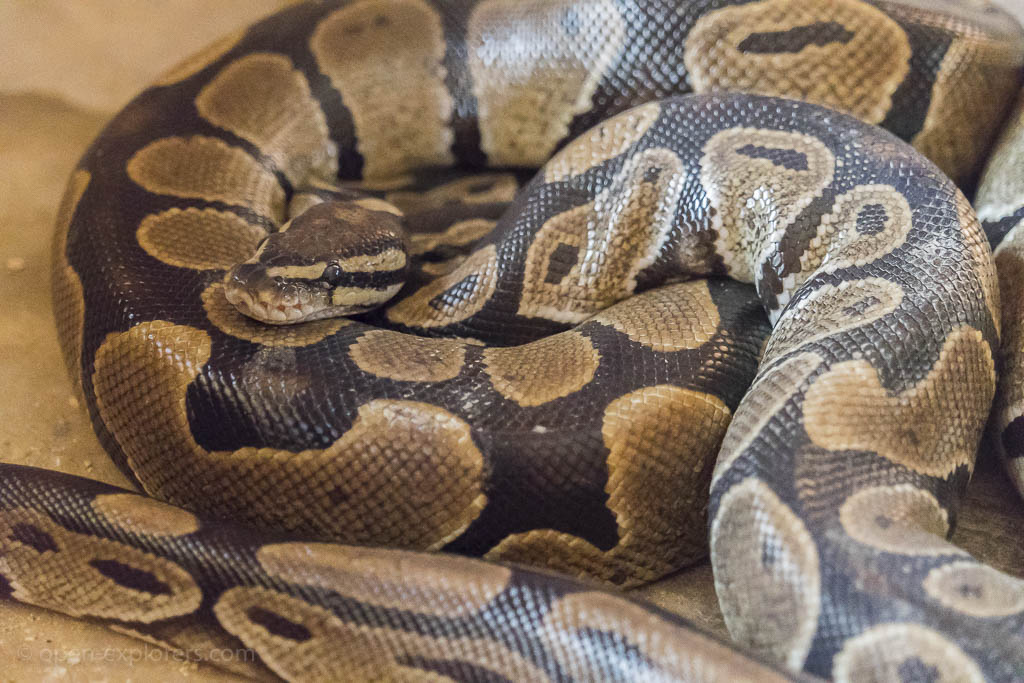
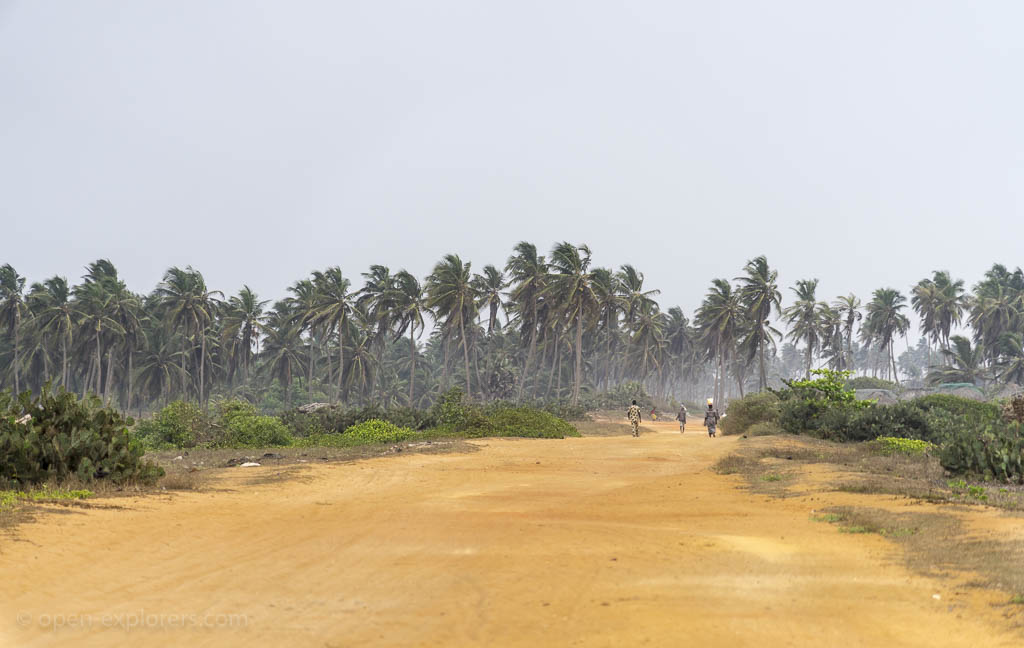
"Côté Pêche" (fishing coast) is the name of the coast that stretches between Ouidah and Cotonou and it's home to countless small fishing villages right on the beach.
Der Küstenabschnitt zwischen Ouidah und Cotonou heisst "Côté Pêche" (Fischfangküste) und ist Heimat unzähliger kleiner Fischerdörfer.
